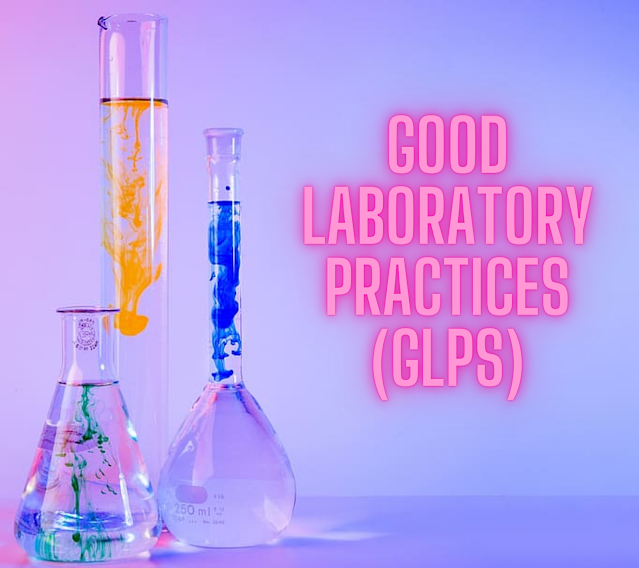Hey viewers, I welcome you to my chemical blog. I am writing this blog to make you people understand some good laboratory practices that you should know before you enter the field of chemistry.
INTRODUCTION TO GOOD LABORATORY PRACTICES (GLPs)
The following literature is related to proper experimental technique and the use of equipment is collectively known as GLPs. Every student should be familiar with and always practice the following procedures outlined in this section.
All the experimental techniques performed by you will be evaluated by your laboratory instructor. Failure to practice the following will lead to poor results and poor techniques. Exceptions to standard GLPs must be notified in your lab report.
1. Cleaning and Storing Glassware
Before using glassware, it must be thoroughly cleaned. However, keep in mind that soap can be a serious chemical contaminant.
Unless otherwise instructed, avoid using soap to clean your glassware. Glassware will be delivered clean, acid-washed, and thoroughly rinsed with deionized water in general. An unbroken film of water on the surface of properly cleaned glassware indicates that it has been cleaned properly.
Drying glassware before use is rarely necessary; in fact, this practice should be discouraged because it wastes time, can cause contamination, and causes volumetric glassware to change.
2. Use of Tap, Distilled, and Deionized Water
In the lab, there are three types of water available for use:
- Tap water
- Distilled water
- Deionized water
The three grades of water are produced at progressively higher costs. In general, use only the bare minimum of purity and avoid wasting water, especially the more expensive grades. For the most part, distilled water will suffice.
3. Handling Reagents and Solutions
The purity and quality of the available reagents are critical for successful analytical work. A freshly opened reagent container can be used with confidence; whether or not the stated assay values for purity and impurities remain valid is entirely dependent on how the container has been handled since it was opened.
The purity of the chemical reagents available is dependent on a strong commitment to the following rules.
- Pour reagents into small pre-cleaned beakers (10- and 20-mL sizes). Any solid or liquid that is not used should be disposed of properly.
- Contamination can be reduced by selecting the smallest bottle that will hold the required amount of reagent. Ascertain that the reagent's purity is sufficient to prevent contamination and interferences and to keep blank to a minimum. In general, only use reagents whose purity you can be certain of (check assay values on the label).
- Replace the top of the reagent container immediately after removing the reagent. Hold stoppers between your fingers; stoppers should never be placed anywhere other than in the neck of the appropriate flask or reagent bottle.
- Never return any excess reagent or solution to a reagent bottle unless specifically instructed to do so.
- Contamination of the entire bottle by returning excess reagent is a false economy because significant time can be spent determining the source of any contamination (and thus poor results), and the entire bottle must then be discarded and a new bottle obtained.
- Clean your spatula with deionized water before bringing a bottle of chemicals to the weighing room. Using a Kim wipe, scrub it dry. Now weigh your solid chemical in the weighing room.
- Maintain the cleanliness of the reagent storage areas and the balances. Clean up any spilled chemicals as soon as possible.
- Do not use a new or unopened bottle of reagent unless you have first obtained permission.
- Maintain the cleanliness of the reagent storage areas and the balances. Clean up any spilled chemicals as soon as possible. Use a new or unopened bottle of reagent only with the permission of the lab instructor.
If you want to learn more about lab safety, visit my blog Laboratory safety rules.






Social Plugin